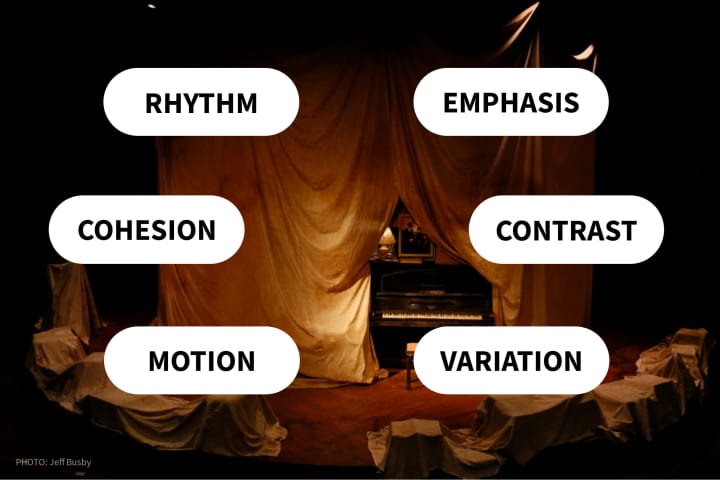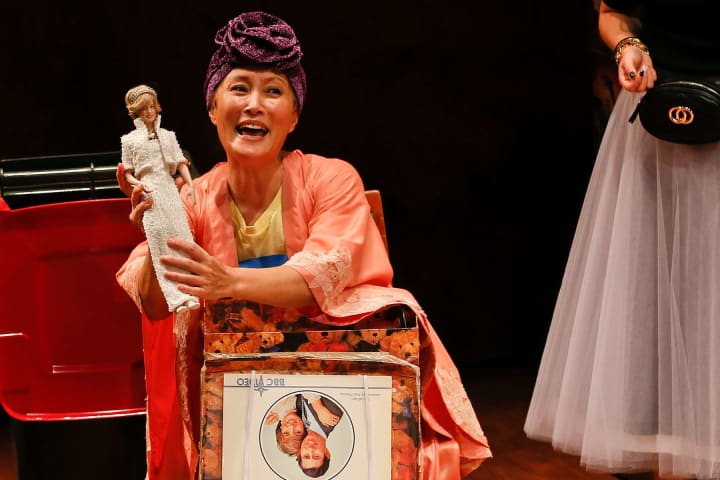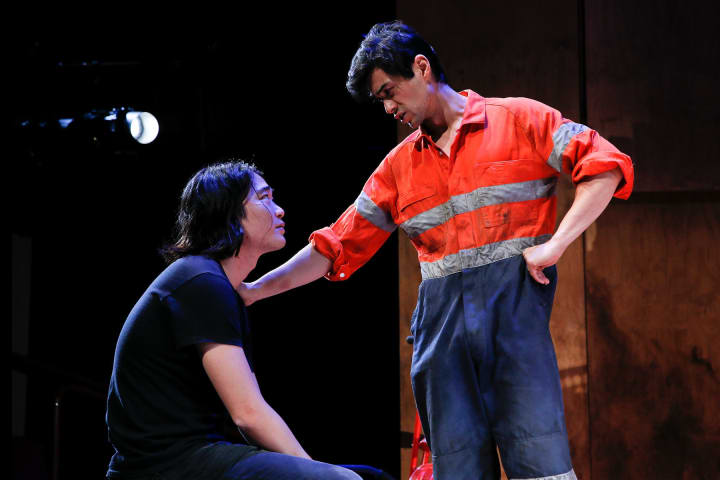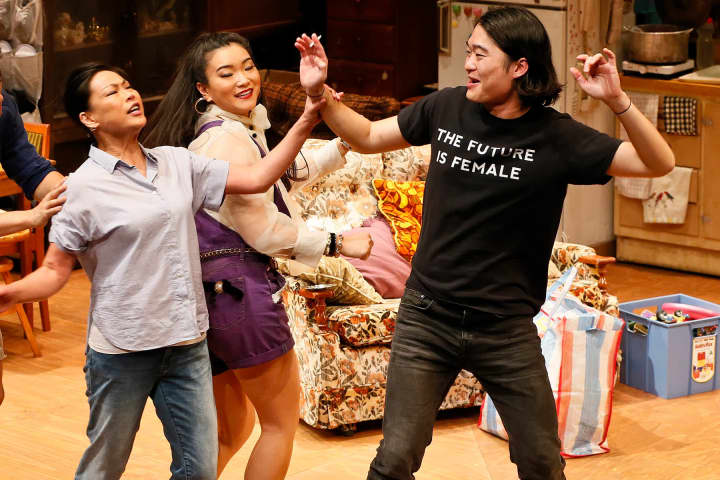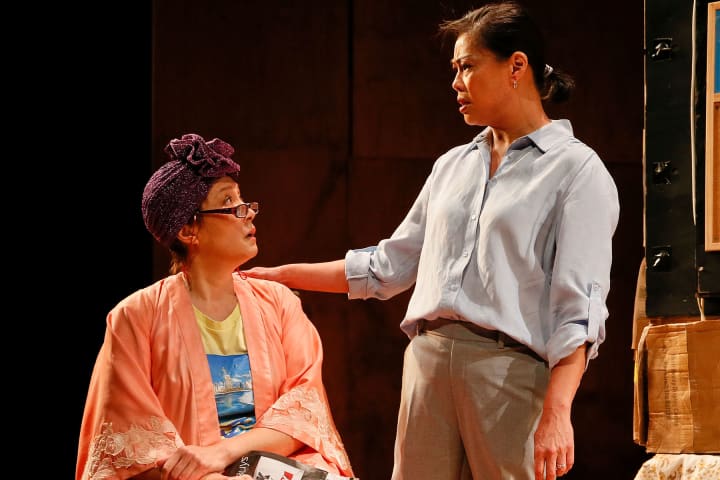A participant in MTC's 2019 Women in Theatre program, Clemence Williams kicks off a big year with the Company by working on Torch the Place. Here, she discusses how she incoporates classical music and technology, diegetic and non-diegetic sound, and learning to accept and love your parents at their most vulnerable.
How would you describe the composition/sound design you’re creating for Torch the Place? What is the world of this play?
Much like the play, the sound design transports us through time and place. It’s filled with 90s nostalgia with a tinge of family trauma.
What kinds of instruments/sounds/genres are you using in your work?
The play begins with oldest sibling, Teresa, playing the ancient and dilapidated family piano. This was the genesis of the sound design/composition. Many of the underscored moments use leitmotifs from popular Rachmaninoff and Chopin piano pieces but often rearranged, texturally thickened and with a modern twist.
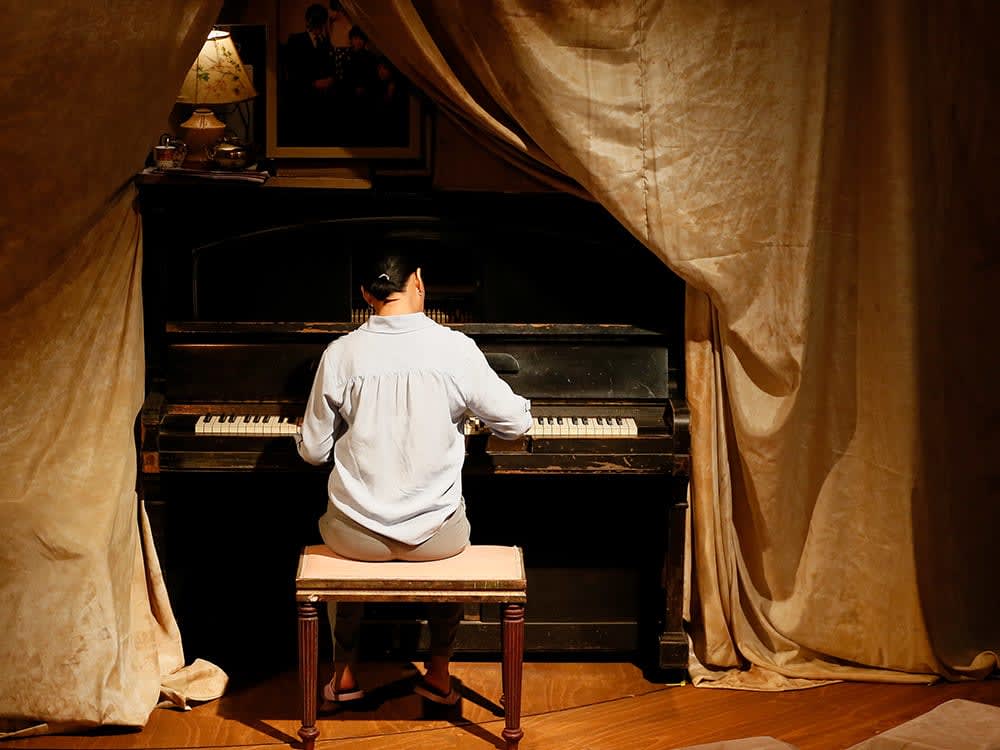
Fiona Choi (Teresa) playing the piano. Photo: Jeff Busby
In your opinion, what is Torch the Place about? How does your composition/sound design support the play’s big ideas?
For me, Torch the Place is about that moment in everyone’s life where they swap positions in the parent/child relationship, where they have to learn to accept and love their parents at their most vulnerable. This switch comes at different moments for each child and therein lies the tension.
This, at times, is represented through discordant notes played by the broken piano, as well as the juxtaposition of classical pieces with contemporary drum loops.
What technology do you use in your work?
I use a mixture of real recorded instruments and software instruments. In order to write music that sounds like it’s using the piano on stage, I needed to record each note of the piano individually to recreate a software keyboard.
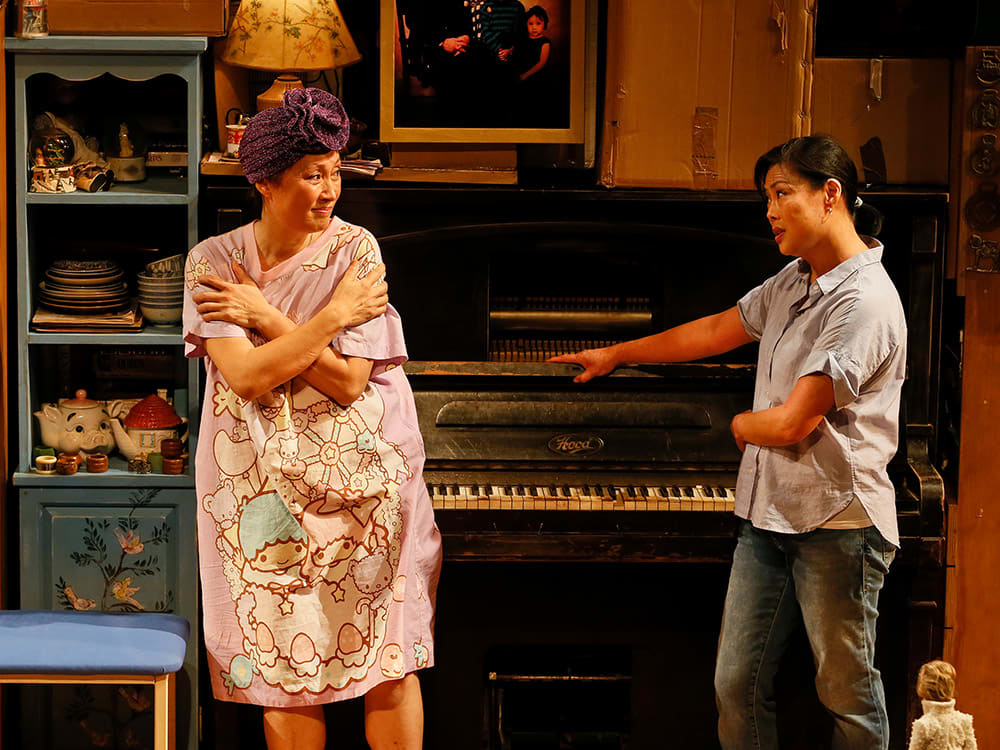
Diana Lin and Fiona Choi with the piano onstage. Photo: Jeff Busby
Could you give an example of how you’re using diegetic and non-diegetic sound?
Diegetic sound: The sound coming from the radio, the TV, the skip arriving.
Non-diegetic sound: The underscoring, the scene transitions.
Where it can get a bit confusing: Mulan starts out as being on the TV only (diegetic) but then expands out to the whole theatre like we are all inside the movie (non-diegetic).
Is there a particular moment in the play that you’re especially excited about?
The game show is a lot of fun. It’s as close as I will ever get to working on The Voice.
Torch the Place is on the VCE playlist for Theatre Studies. Is there anything else about your composition/sound design that you’d like to share with students?
The challenge of sound design and composition is to knit together the two energies of scenes. Have a think about how the music lifts/deflates the mood and tension at the end/beginning of a scene.
Torch the Place is on at Arts Centre Melbourne, Fairfax Studio, from 8 February.
Published on 13 February 2020

